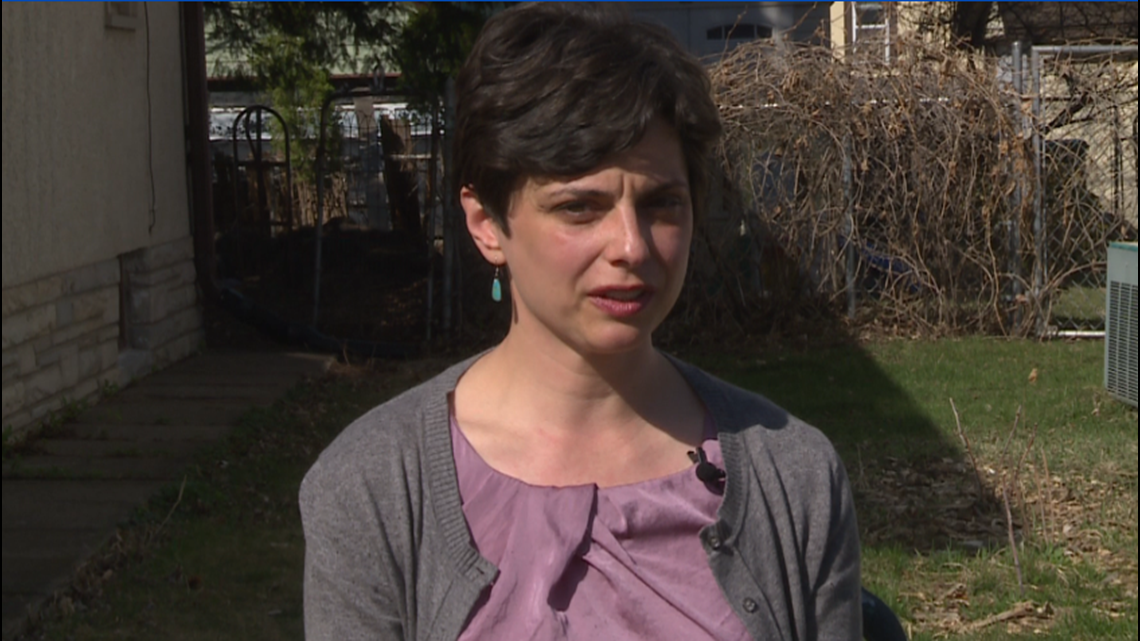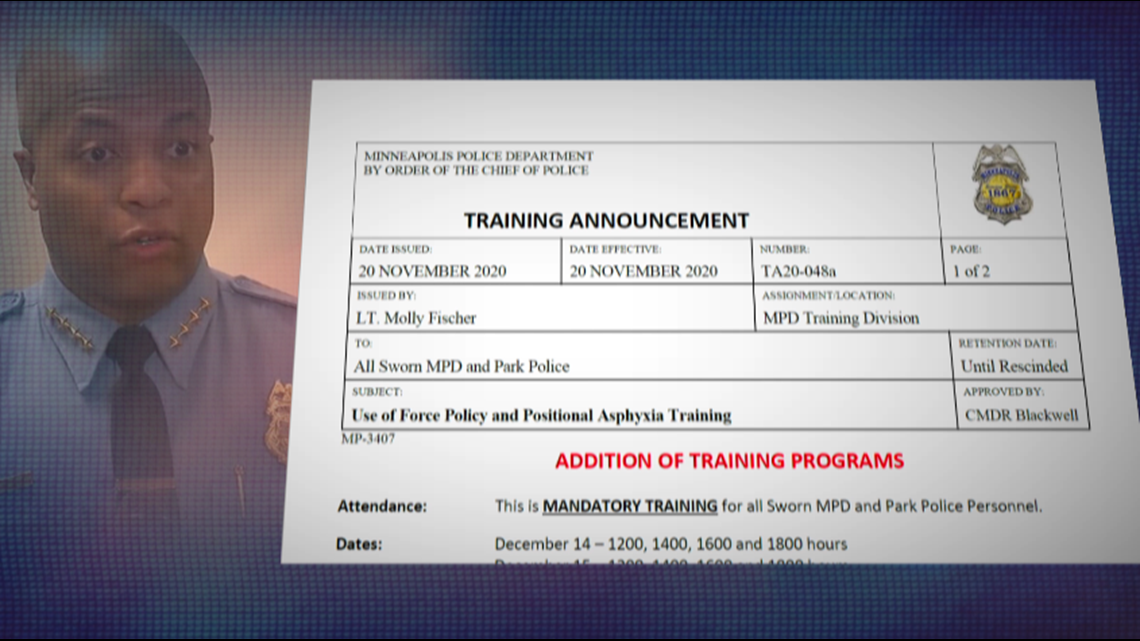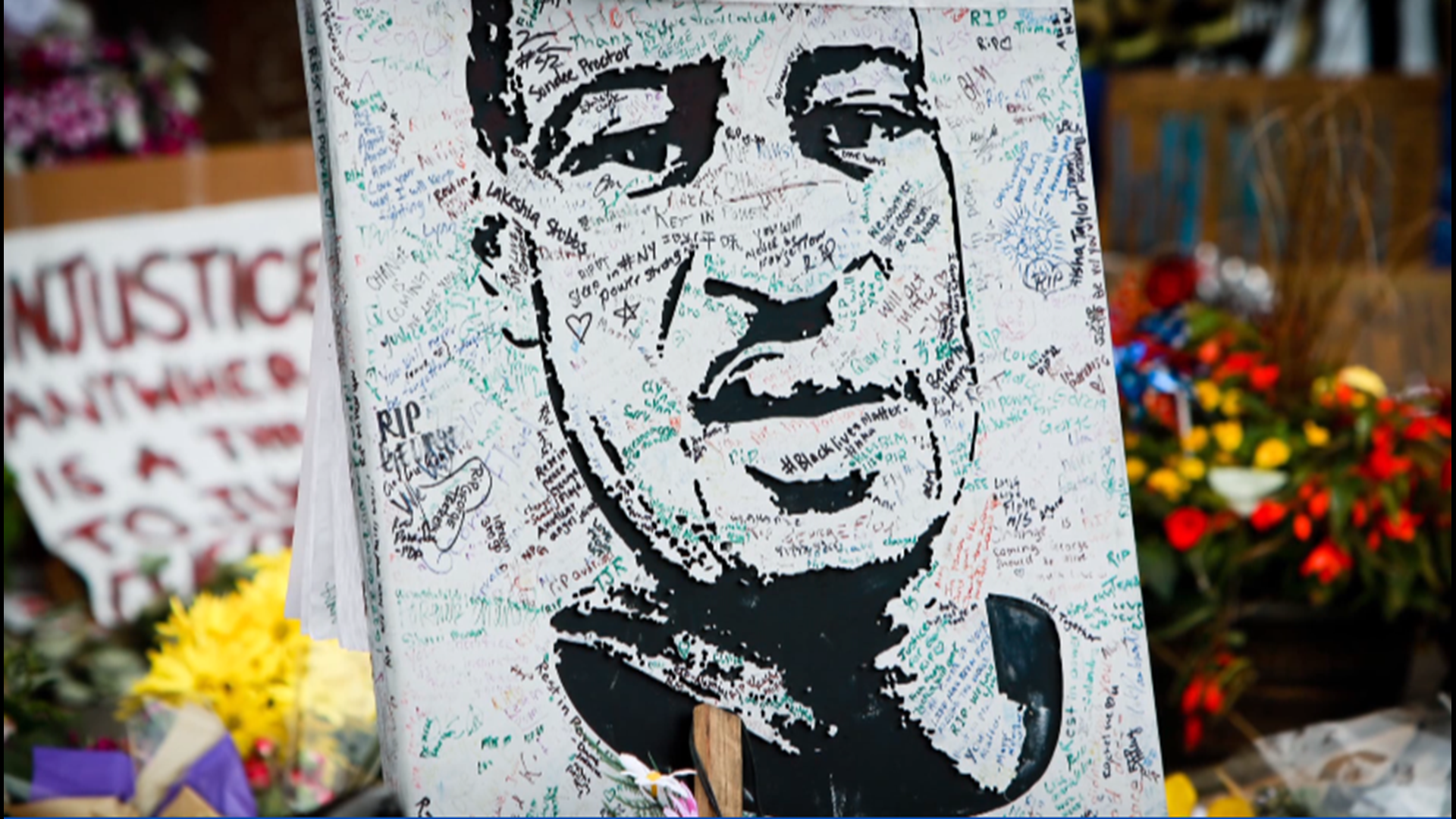MINNEAPOLIS — New records obtained by KARE 11 show it took the Minneapolis Police Department months – even after George Floyd’s death – to order beefed up in-person training for all its officers about the dangers of holding someone face down with pressure on their back.
Although MPD created a new four-minute online training video specifically warning about the dangers of prone restraint last fall, records show all rank-and-file Minneapolis officers were not ordered undergo additional in-person “Positional Asphyxia Training” until December 2020 – nearly six months after Floyd’s death.
The issues of prone restraint and positional asphyxia were at the heart of the Derek Chauvin murder trial.
Police bodycam videos showed that Floyd was held down in the street struggling to breathe for nine minutes and 29 seconds. Medical testimony presented by the prosecution showed Floyd died because he asphyxiated while being held prone by officers.
Minneapolis officials testified that Chauvin violated existing police policy.
But Chauvin’s actions and the fact that other officers on the scene did not overrule him raised questions about how widely – and effectively – that policy had been communicated.


“Unfortunately, it took two deaths for the MPD to decide that they were going to hammer this training home in such a way that no one should be able to ever say they didn’t get it again,” said attorney Jeff Storms, a member of the legal team representing George Floyd’s family.
Two deaths
Storms was also involved in a lawsuit against Minneapolis following the 2010 prone restraint death of David Smith.
The 28-year-old had committed no crime but battled mental illness. His behavior at the downtown YMCA in 2010 raised red flags for staff and the police were called.
The incident escalated into a struggle. Video shows it ended with officers kneeling on Smith’s back for about four minutes.
An officer can be heard saying, “I don’t think he’s breathing.”
Smith’s autopsy shows he died due to “mechanical asphyxia” caused by prone restraint.
As part of the settlement in the multi-million-dollar wrongful death lawsuit brought by Smith’s family, MPD promised to “require its sworn police officers to undergo training on positional asphyxia.”


But when Smith’s sister Angela saw the video of Floyd’s death, she questioned whether Minneapolis had lived up to its promise of additional training.
“I felt like, how could this same thing happen again when we did everything possible to make sure that it didn’t,” she told KARE 11.
“It's like my brother died all over again,” Angela said as tears streamed down her face.
Buried warnings?
Chief Maderia Arradondo said MPD complied with the training requirements spelled out in the Smith settlement.
“Mr. George Floyd’s tragic death was not due to a lack of training, the training was there,” he told reporters.
Department records showed in 2012 officers were shown at rollcall a safety video produced by the NYPD that addressed the dangers of prone restraint and positional asphyxia. In it, officers are instructed: “As soon as suspects are handcuffed get them off their stomachs, turn them on their side …”
But after that, critics say the risk of prone restraint was a minimal part of MPD training.
“Between David Smith’s death and George Floyd’s death, the City did almost nothing to specifically address the dangers of prone restraint and positional asphyxiation,” said Abigail Cerra, a Commissioner on the Minneapolis Police Conduct Oversight Commission (PCOC).


Cerra has researched MPD prone restraint and positional asphyxia training for a PCOC hearing originally scheduled for late March. It was postponed until after the Chauvin trial at the instruction of the City Attorney. A new date for the hearing has yet to be announced.
Cerra says positional asphyxia risks have been buried – often limited to a single sentence or paragraph – in MPD training on defensive tactics or the controversial excited delirium syndrome.
“There was no standalone training on positional asphyxiation or prone restraint, or any kind of risks associated with prone restraint,” Cerra said.
That has now changed.
New training ordered
The MPD Medical Services Training Division, which became an official department unit around the time George Floyd was killed, created the new four-minute training video warning about prone restraint last August.
“Positional asphyxia happens when a person can’t get enough air to breathe due to the positioning of his or her body,” the video begins.
In October, officers were told to watch it online.
Then, on November 20th – nearly six months after Floyd’s death – Chief Arradondo ordered the entire police force to undergo additional in-person “Positional Asphyxia Training.”


“This is MANDATORY TRAINING for all Sworn MPD and Park Police Personal,” the internal memo states.
The required two-hour training sessions were scheduled in mid-December and covered MPD Use of Force Policy and Positional Asphyxia.
The new in-person training order was issued less than two weeks after a KARE 11 investigation about prone restraint aired. The investigation revealed startling new statistics about the number of people who died, like George Floyd, after prone restraint.
The joint investigation by KARE 11 and 9News in Denver found that over the past decade more than a hundred people nationwide had died after being held prone by law enforcement.
“I think the news coverage about the dangers of positional asphyxiation and prone restraint were absolutely essential to changing the MPD practice and training around prone restraint,” Commissioner Cerra told KARE 11.
Deaths still happening
Although Minneapolis has increased its training, prone restraint deaths continue to happen across the country.
On April 19th, just one day before Derek Chauvin was convicted of murdering George Floyd, police officers in the Northern California city of Alameda pinned a man face down on the ground for more than five minutes in an arrest that ended with his death.
The video from two officers' body cameras, released by the city, showed officers talking to Mario Gonzalez, 26, in a park after receiving 911 calls that he appeared to be disoriented or drunk. Gonzalez seems dazed and struggled to answer questions.
When Gonzalez would not produce identification, the officers attempted to force his hands behind his back to handcuff him. He resisted and was taken to the ground.
One officer put an elbow on his neck and a knee on his shoulder.
"He's lifting my whole-body weight up," an officer says at one point.
Gonzalez's protests seem to weaken and after about five minutes, he appears to lose consciousness.
Shortly before he stops breathing, one officer asked the other: "Think we can roll him on his side?" but the other responds, "I don't want to lose what I got, man."
In another death during prone restraint, Eric Parsa, a severely autistic teenager in Louisiana, was – like George Floyd – handcuffed with officers on top of him for more than nine minutes.

